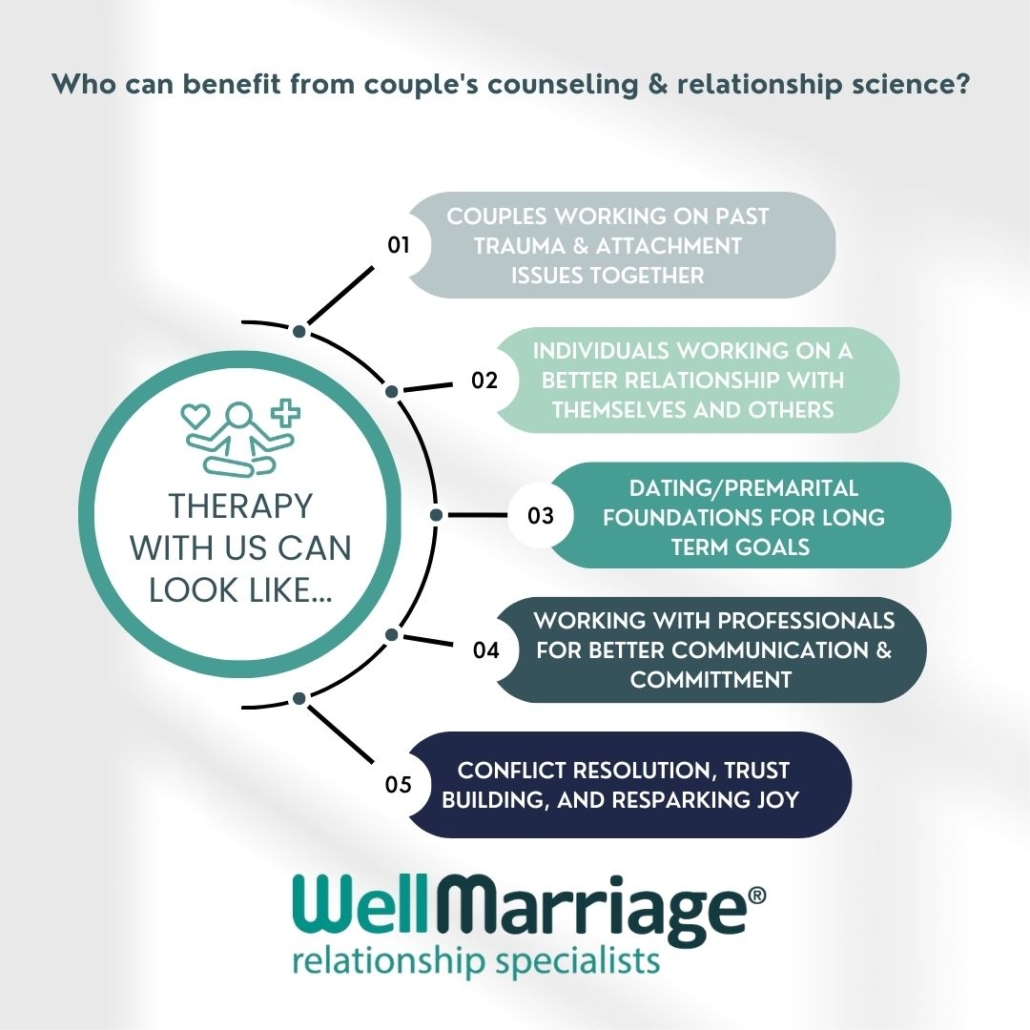The Best Guide To Aim Point Counseling
Table of ContentsAim Point Counseling Can Be Fun For Everyone9 Simple Techniques For Aim Point CounselingFascination About Aim Point CounselingIndicators on Aim Point Counseling You Should KnowThe Greatest Guide To Aim Point CounselingUnknown Facts About Aim Point Counseling
The longitudinal style entails a pre-treatment study and two follow-up studies at 3- and 12-months post-intervention. The research is established in eight Relationships Australia Victoria centres, across municipal, external suburban areas, and regional/rural sites. Relationships Australia, a non-government organisation, is the biggest company of pair coaching and connection solutions in Australia.
In Australia, the average size of marital relationship before splitting up is 8.8 years, and around half of all separations involve pairs with youngsters [1] These high prices of relationship break down have been constantly connected with negative wellness consequences for both adults and youngsters following divorce/separation. These consist of seclusion from support networks, and minimized earnings and standard of living for both grownups and youngsters [3], issues of loyalty over children for males, and clinical depression and loss of identification for women [4,5]
Aim Point Counseling for Dummies
Longitudinal research studies additionally suggest that kids of separation have a higher occurrence of emotional conditions, alcohol and drug usage, and high-risk sex-related behavior [7] Although the results of divorce and separation can be destructive, study suggests that high relationship dissonance in intact couples is likewise likely to have unfavorable end results.
In addition, elements that influence the end results of these solutions need detailed investigation. Research to date has recognized both pair and specific factors that might add to relationship dissonance. These consist of partnership contentment and dedication at the couple degree, and depression at the individual degree. Durable research to examine relationship-enhancing treatments in the community are limited.
The Only Guide for Aim Point Counseling
Relationship satisfaction has been the most common end result variable identified in more than 200 analyses of couple therapy [11,12] Researches have actually found substantial improvements in connection complete satisfaction from pre- to post-treatment [13,14] and throughout one to 2 years adhering to therapy [15] In these studies, partnership contentment was most regularly assessed using the Dyadic Modification Range (DAS) [16] While many researches show renovations in partnership satisfaction complying with couple coaching, they are limited by the examples and steps used, largely short-term follow-up time frames, and analyses that do not account for the dyadic nature of couple information - how much does marriage counseling cost. Partnership dedication, based upon procedures such as the Commitment Supply (CI) [19], is an additional generally explored relationship outcome.
To sum up, research study indicates that couple-specific variables along with specific elements might forecast the outcomes of couple therapy and partnership services. The causal direction of these connections, however, is less clear. These monitorings are essential, since, to justify over here and lead the application of relationship services such as pair coaching, empirical evidence must check out both the results of partnership services and the aspects that anticipate successful therapy.
There is an expanding consensus that effectiveness research studies need to be matched by effectiveness research to best inform clinical technique [ 29] The limited performance research that exists to date suggests that pair coaching can boost results such as partnership contentment [33,43], interaction abilities and general health [44], a minimum of in some European nations.

We presently recognize little concerning the accounts of couples that look for connection education and learning compared to those that look for partnership therapy, or the results of these programs. Anecdotal proof recommends that there might be considerable distress among at least some pairs seeking connection education. Partnership education and learning programs vary from pair therapy as they are commonly extremely structured, conducted in groups, and concentrate on a mix of four components; awareness, feedback, cognitive modification, and skills training [45]
Not known Incorrect Statements About Aim Point Counseling
Feedback entails participants finishing surveys concerning their connection (e.g. steps of interpersonal problems), and obtaining info on what their ratings suggest. Cognitive-behavioural strategies advertise altering cognitions to help with positive relationships.
These meta-analyses highlight constraints in the current literature on partnership education and learning. This sample account might not stand for clients that commonly present for relationship education.
The Basic Principles Of Aim Point Counseling

Very little research study has actually examined the comparative advantages of pair counselling and connection education and learning programs. As clients are most likely to self-select right into these service kinds, it is unclear whether particular relationship distress profiles present per service type, or undoubtedly whether there is a communication in between presenting account, service type and outcome.
(https://www.openlearning.com/u/toddrashid-ssom9i/)
Therefore, we have actually consisted of a 12-month follow-up to gauge longer-term trends and results. The research study uses a number of standard result procedures since some previous examinations have been criticised for their lack of standard analysis [50] Finally, making use of analytical analyses that assume self-reliance of information, such as t-tests, or ANOVAs, has actually prevailed in previous research studies [ 44,49]
Therefore, we recommend to use multi-level statistical modelling treatments that regulate for the inter-dependence of couple information to analyze any kind of therapy impacts. The certain aims of the ECC research are to: 1. Map accounts of clients looking for neighborhood agency-based pair counselling vs. connection improvement programs in terms of socio-demographic and connection indicators (such as relationship complete satisfaction, connection commitment, social troubles, and factors for participating in), in addition to health and wellness (such as depression, basic wellbeing) and wellness service use (eg.
2. Determine whether pair coaching and connection education services improve 3- and twelve-month end results for partnership satisfaction, commitment, and depression, utilizing analytical evaluations ideal to couple data. 3. Figure out the loved one payments of client elements (private and couple) and therapy/education factors to end results at 3- and 12-months, and to sustainability of end results over time.
The Definitive Guide for Aim Point Counseling
Multi-level modelling to determine pre-post differences, managing for dyadic (pair) degree. To add to the literature analyzing the performance of community-based couple coaching.